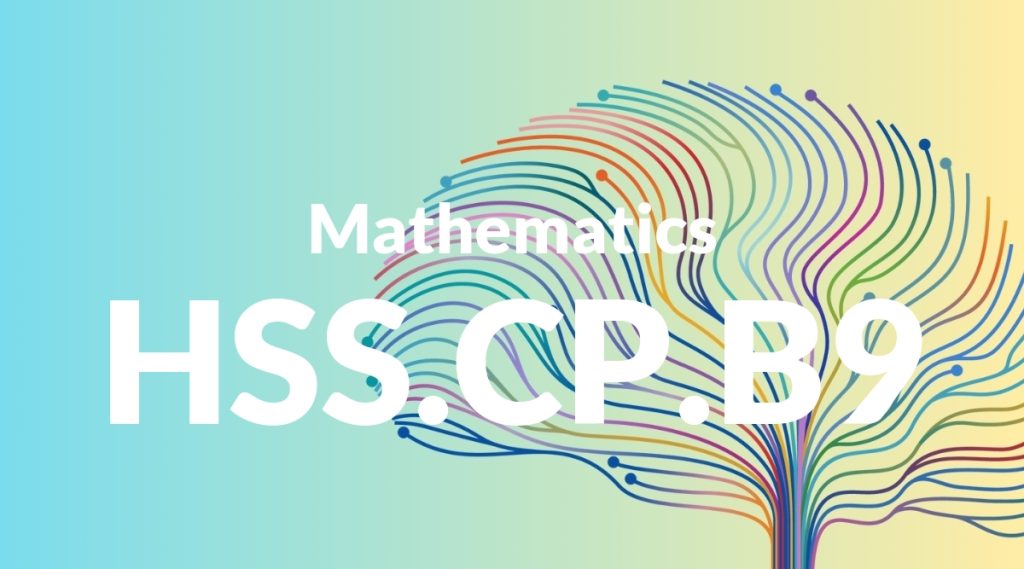Standard: HSS.CP.B9 – (+) Use permutations and combinations to compute probabilities of compound events and solve problems.
Grade level: High School: Statistics & Probability
Subject: Mathematics
Domain: Conditional Probability & the Rules of Probability
Teacher Overview
This standard focuses on using permutations and combinations to compute probabilities of compound events. Mastery of this standard is crucial as it builds on foundational probability concepts and prepares students for more advanced topics in statistics and probability. Understanding these principles is essential for analyzing and solving real-world problems involving complex events. Students should understand basic probability principles, including the concepts of events, outcomes, and simple probability calculations. Familiarity with factorial notation and basic algebra skills is also necessary.
After mastering this standard, students will be equipped to handle more complex probability problems involving dependent events and advanced counting techniques. They will also be prepared for higher-level statistics courses and real-world data analysis tasks.
Common Misconception 1
A common misconception is that permutations and combinations are interchangeable. This is incorrect because permutations are used when the order of outcomes matters, whereas combinations are used when the order does not matter. Failing to distinguish between the two can lead to incorrect probability calculations.
Intervention 1
To address this misconception, use clear and distinct examples where order is important (e.g., arranging books) versus where it is not (e.g., selecting a committee). Visual aids and practice problems can help reinforce the correct usage of each concept.
Common Misconception 2
Another common misconception is assuming that the total number of outcomes is always the product of individual probabilities. This is incorrect because it overlooks the complexity of compound events and dependent probabilities.
Intervention 2
To correct this misunderstanding, provide counterexamples and use tree diagrams to show the correct method for calculating total outcomes. Emphasize the importance of considering the specific context of each problem.
Prerequisite Knowledge
Students should have a basic understanding of probability concepts, including simple events, outcomes, and basic counting principles. Familiarity with factorial notation and basic algebraic manipulation is also recommended.
Subsequent Knowledge
After mastering this standard, students will be able to tackle more complex probability problems involving dependent events and advanced counting techniques. They will also be better prepared for higher-level statistics courses and real-world data analysis tasks.
Instructional Activities
- Create and solve problems involving permutations and combinations.
- Use tree diagrams to visualize compound events.
- Apply permutations and combinations to real-world scenarios, such as lottery odds or seating arrangements.
- Conduct experiments to collect data and calculate probabilities using permutations and combinations.
- Develop and present a project that uses permutations and combinations to solve a real-world problem.




